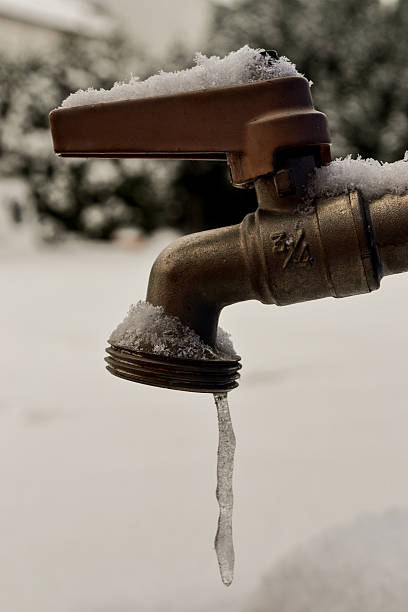Do you find yourself hunting for advise involving How To Avoid Freezing Pipes?

Winter can ruin your plumbing, specifically by freezing pipes. Below's exactly how to avoid it from happening and what to do if it does.
Intro
As temperatures decrease, the risk of frozen pipelines boosts, potentially bring about pricey repair work and water damages. Understanding exactly how to avoid icy pipes is vital for homeowners in chilly environments.
Prevention Tips
Insulating susceptible pipes
Cover pipes in insulation sleeves or utilize warmth tape to protect them from freezing temperature levels. Concentrate on pipelines in unheated or exterior areas of the home.
Home heating techniques
Keep interior rooms appropriately heated, especially locations with plumbing. Open up cupboard doors to enable cozy air to distribute around pipes under sinks.
Just how to identify frozen pipes
Look for reduced water flow from taps, unusual odors or sounds from pipelines, and visible frost on exposed pipelines.
Long-Term Solutions
Structural changes
Consider rerouting pipes away from outside walls or unheated areas. Add added insulation to attic rooms, basements, and crawl spaces.
Upgrading insulation
Invest in high-quality insulation for pipes, attics, and wall surfaces. Correct insulation assists keep consistent temperatures and minimizes the danger of icy pipes.
Protecting Outdoor Pipes
Yard hoses and outdoor taps
Separate and drain garden pipes prior to wintertime. Set up frost-proof spigots or cover outside faucets with shielded caps.
Understanding Icy Pipes
What triggers pipes to ice up?
Pipes freeze when exposed to temperature levels listed below 32 ° F (0 ° C) for prolonged durations. As water inside the pipelines freezes, it expands, putting pressure on the pipe walls and potentially causing them to rupture.
Threats and damages
Frozen pipes can cause water system disturbances, property damages, and costly repair services. Burst pipes can flooding homes and create comprehensive structural damages.
Indicators of Frozen Pipes
Determining frozen pipes early can prevent them from bursting.
What to Do If Your Pipelines Freeze
Immediate actions to take
If you think frozen pipes, keep taps open up to ease pressure as the ice thaws. Make use of a hairdryer or towels soaked in warm water to thaw pipelines gradually.
Verdict
Protecting against icy pipes calls for aggressive steps and fast feedbacks. By recognizing the causes, indicators, and preventive measures, homeowners can secure their pipes during winter.
5 Ways to Prevent Frozen Pipes
Drain Outdoor Faucets and Disconnect Hoses
First, close the shut-off valve that controls the flow of water in the pipe to your outdoor faucet. Then, head outside to disconnect and drain your hose and open the outdoor faucet to allow the water to completely drain out of the line. Turn off the faucet when done. Finally, head back to the shut-off valve and drain the remaining water inside the pipe into a bucket or container. Additionally, if you have a home irrigation system, you should consider hiring an expert to clear the system of water each year.
Insulate Pipes
One of the best and most cost-effective methods for preventing frozen water pipes is to wrap your pipes with insulation. This is especially important for areas in your home that aren’t exposed to heat, such as an attic. We suggest using foam sleeves, which can typically be found at your local hardware store.
Keep Heat Running at 65
Your pipes are located inside your walls, and the temperature there is much colder than the rest of the house. To prevent your pipes from freezing, The Insurance Information Institute suggests that you keep your home heated to at least 65 degrees, even when traveling. You may want to invest in smart devices that can keep an eye on the temperature in your home while you’re away.
Leave Water Dripping
Moving water — even a small trickle — can prevent ice from forming inside your pipes. When freezing temps are imminent, start a drip of water from all faucets that serve exposed pipes. Leaving a few faucets running will also help relieve pressure inside the pipes and help prevent a rupture if the water inside freezes.
Open Cupboard Doors
Warm your kitchen and bathroom pipes by opening cupboards and vanities. You should also leave your interior doors ajar to help warm air circulate evenly throughout your home.

As an avid reader about Winter Plumbing Precautions: Preventing Frozen Pipes, I assumed sharing that portion was valuable. For those who appreciated our blog posting please make sure you remember to pass it around. Thank you for going through it.
Call Today